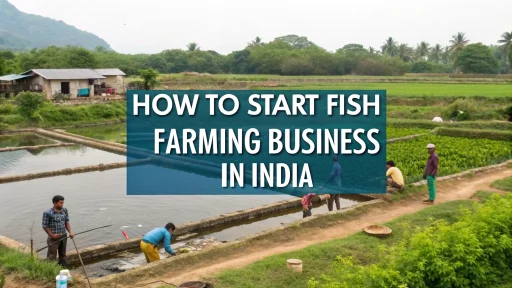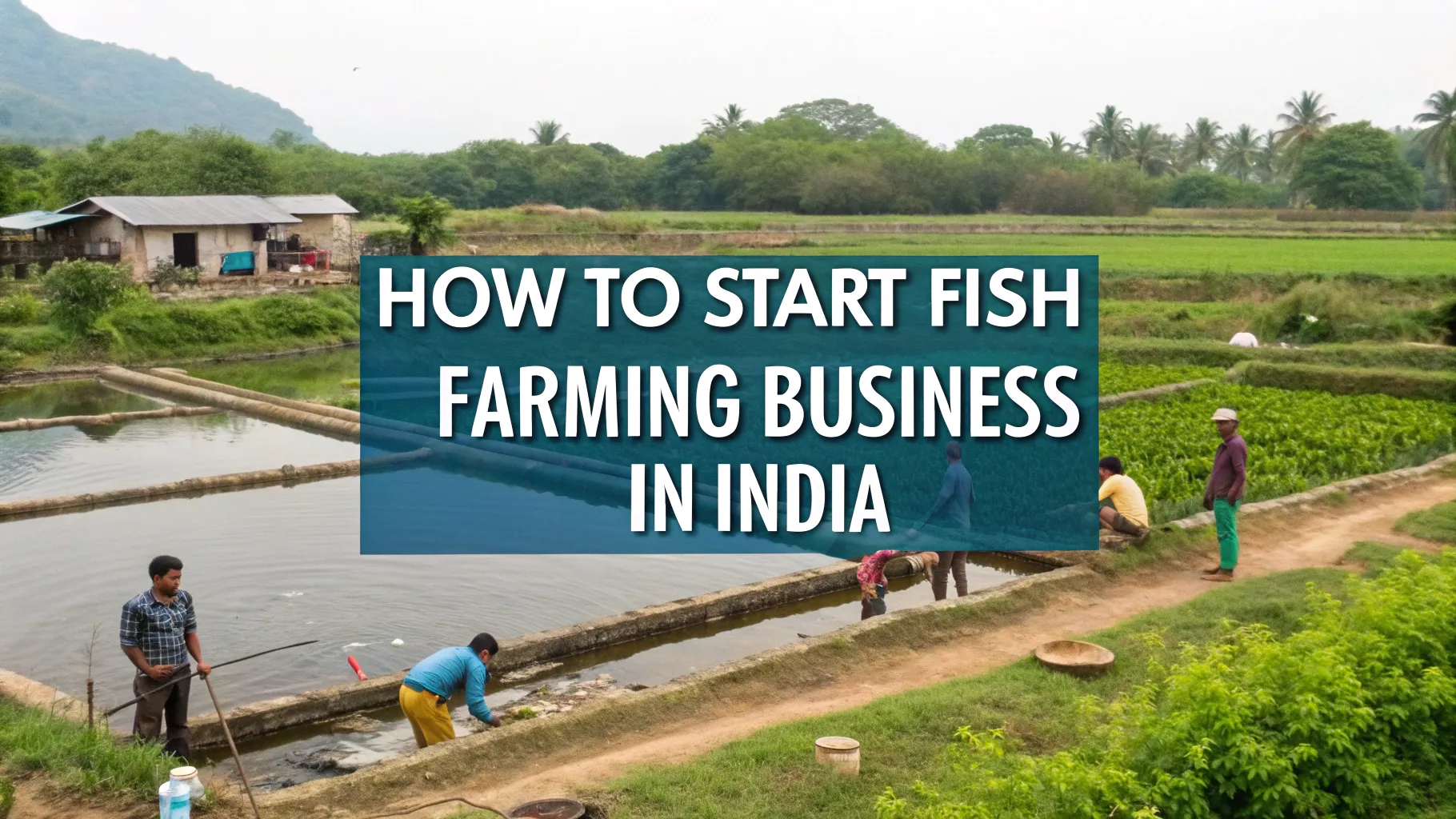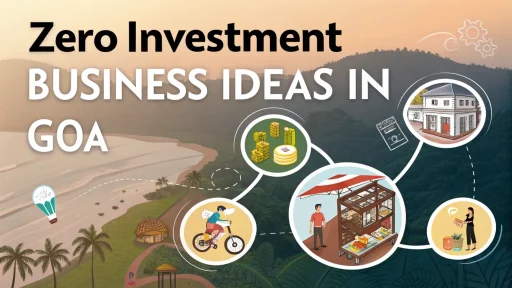India’s aquaculture industry is going through an evolution. It was once thought of as a low-end rural source of income the fish farming business industry has evolved into an agro-industrial business with high potential, supported by science, technology, and a growing demand. For modern entrepreneurs, particularly those with backgrounds in pharmaceuticals, agritech, or food processing, fish farming offers not just profitability but also a future-proof opportunity to participate in India’s sustainable food ecosystem.
In a time when demand for protein-rich food items increases, and traditional catch fisheries are experiencing environmental degradation aquaculture is becoming a stable, sustainable and resource-efficient business model. With support from policymakers, the latest equipment, and expert advice accessible, establishing a fish farming business isn’t just for farmers of the past, it is now an option for entrepreneurs in the industrial sector and business leaders with a focus on process.
The Rising Importance of Fish Farming in India’s Food Economy
India is ranked second in the world when it comes to aquaculture, and fish production is responsible for more than 55% of this production. The consumption of fish in India has been steadily increasing due to changing lifestyles, urban health issues shifts, and a growing awareness of the benefits of nutrition. Fish is not just seen as a cost-effective source of protein that is lean, but also as a crucial element of child nutrition or elderly nutrition, and even clinical nutrition in hospitals.
Furthermore, the practice of farming fish is essential for food security, job generation, and the development of rural areas. More than 28 million people are dependent directly or indirectly on the fishing industry and this figure is predicted to increase because technology is democratizing access to aquaculture systems.
From an industrial perspective from a business perspective, the value chain provides numerous entry points: farming, production of feed and seed breeding and cold chain logistics, fishing processing, extraction of nutraceuticals, as well as export packing. By integrating vertically, small-scale operations can be transformed into a multi-layered agro-industrial enterprise.
Related: Related: Profitable Fish Farming Business Ideas. Business Opportunities in Fish and Aquaculture Industry
Sector Growth and Market Demand Outlook (2025-2030)
Over five years, India’s aquaculture market is expected to expand at a rate of more than 10 percent, with the total market size predicted to rise to Rs 2.26 lakh crores by the year 2030. This growth is due to an increase in consumption, increased exports, as well as improved farming practices.
Demand for domestic food is stimulated by the rise of increasing urbanization, a health-conscious mindset, as well as a shift away red meat. Fish is now a popular protein source because of its ease of digestion, low fat content, and its broad ability to adapt food styles throughout Indian cuisines.
The potential for exports continues to grow in particular for species of high value such as shrimps, Pangasius, and Tilapia. India is currently one of the leading exporters of shrimp in the world and there is a growing demand for sustainable, antibiotic-free fish on the international market.
Government policy, through schemes like pm Matsya Sampada Yojana (PMMSY) and investment in infrastructure for fishing accelerates the growth. The growth of chains for cold storage and feed units, hatcheries and training centres has helped entrepreneurs who are not experienced to start their venture with confidence.
Choosing the Right Fish Farming Model
Fish farming isn’t a universally-fitting business. The model of farming should be chosen based on the accessibility to water, land technology, as well as the business objectives. India has a variety of systems that are available that each have their particular advantages.
Pond-Based Culture is the best known method. It involves constructing ponds of earth and then restocking them with species such as Rohu, Catla, or Mrigal. This model does require water and land but it is able to support big-scale projects and suitable for regions that have consistent water sources.
Recirculating aquaculture Systems (RAS) are a more contemporary approach. These closed-loop systems recycle and filter the water in tanks, which allows fish to be grown in small spaces while maintaining precise environmental controls. While they need a larger initial set-up, RAS systems are ideal for urban or periurban settings and can be used with rapidly growing species such as Tilapia and Pangasius.
Biofloc Technology provides an innovative, sustainable solution. Through the use of beneficial microbes that transform waste into biomass rich in protein and reduces feed costs as well as water usage. Biofloc systems are small, economical, and growing in popular among the young entrepreneurs.
Cage and Pen Culture uses large water bodies, like reservoirs and lakes, in which fish are kept in enclosures with nets. Although this requires permits and nature-based water resources, cost of operation is minimal, and the yields can be huge.
Each system is unique in its operational, structural, and maintenance requirements. Thus, the choice of an entrepreneur should be in line with the environmental aspects and species strategy, scalability objectives and access to markets.
Strategic Selection of Fish Species for Profitability
Selecting the correct species of fish is crucial to successful. It is essential to align the species to the climatic conditions as well as growth cycles, food availability, and most importantly, market demand.
Rohu as well as Catla are cultivated extensively throughout North as well as East India. They can adapt well to pond conditions, expand over 9-12 months and are able to meet the demand of the market.
Tilapia is an ideal choice for systems that are intensive like RAS or Biofloc because of its toughness and quick growth. If you have the right feeding and water management, it will reach market size within 6 months, which makes it ideal for harvesting multiple cycles throughout the year.
Pangasius (Vietnamese catfish) is favored due to its meat yield that is high as well as its high demand in processing and frozen fish pieces.
Magur (Singhi) as well as Murrel are native species that are highly sought-after in the ethnic, medicinal and market for restaurants.
Vannamei Shrimp, although more complex in terms the control of disease and salinity requirements It is the most important exporter and is one of many of the highest-profitable aquaculture projects in India.
The selection of species should be done by analyzing hatchery availability and water parameters, as well as feed prices, as well as the market in which you want to sell (domestic as opposed to. export). Consultation with experts in fisheries or feasibility experts prior to finalizing the strategy for each species is strongly advised.
Related: Production and Formulation of Fish and Shrimp (Prawn) Feed
Step-by-Step Process of Starting a Fish Farming Unit
Establishing a farm for fish requires careful planning, technical setup, and understanding of chemistry and biology. In contrast to traditional farming, aquaculture requires careful monitoring and flexible management to ensure the highest production and growth.
Site Selection and Infrastructure Development
The achievement of a fish farm begins with the land. Pond-based systems require ponds made of earth with a gentle slope outlets, inlets, and aeration options. Tank systems or RAS can be constructed in sheds or warehouses, and include tanks, filters, blowers, monitoring systems.
Management of water quality is a fundamental aspect. The parameters like pH and temperature, as well as dissolving oxygen (DO) and ammonia levels should be checked and regulated.
Procurement of Quality Fingerlings
Fish seed must be purchased from hatcheries that are certified. Fast-growing, healthy fingerlings create the bio-based foundation of your business. Acclimatization tanks or ponds for nursery could be required to gradually adjust fingerlings to the farming’s water requirements. The density of stocking must be cautiously determined to prevent overcrowding.
Feeding and Nutrition Management
Feeding methods vary according to species, stage of growth, and the system. Pellets for commercial feed are frequently employed and are selected according to protein content, floatability and efficiency of conversion. Bioflocs use microbial biomass as a source of energy. is added to the diet, thus reducing the cost of feeding.
Feeding needs to be performed in a specific order usually 3-4 times a day. Food that has been spoiled should be disposed of to prevent water quality degradation.
Health Monitoring and Disease Prevention
Routine health checks are essential. The behavior of fish, their feeding activities and any signs of discoloration or lesions should be observed closely. Guidelines for quarantining new stocks and regular dosing of probiotics as well as periodic water testing, will help prevent outbreaks of major severity. RAS systems provide greater biosecurity, but they require regular maintenance on mechanical systems.
Harvesting and Marketing
The harvesting process is completed when the fish are of a size that is marketable. The methods vary from netting and pond draining depending on the type of system. The fish that are harvested are separated by size cleaned, chilled, and then packed for transport. With the rising popularity of clean and traceable food products, branding your product as clean, safe from antibiotics, and sustainably raised adds a lot of value.
Distributors include mandis in local areas restaurants and hotels, as well as direct-to-consumer platforms, fish markets and food aggregaters. Export models use third-party processors, or direct contracts with foreign buyers.
Emerging Opportunities in the Aquaculture Ecosystem
Entrepreneurs are able to explore more than farming to develop integrated or allied companies. Production of fish feed, hatchery activities Cold storage logistic planning, ecommerce delivery chains Value-added processing (filleting freezing, frying packaging) and extraction of fish oil make up a bigger value chain that has enormous potential.
There’s a an increasing interest in nutraceuticals and pharmaceutical derivatives made from products of the fish industry. Omega-3 oil, collagen, and concentrated fish protein with enzymes have multiple uses. They are used in supplements, skincare, and capsule manufacturing. This bridges aquaculture with health care.
Additionally, climate-smart aquaculture is gaining traction. Solar-powered aerators, IoT-based water monitoring, and AI-driven feeding systems are key innovations. These technologies are creating new opportunities for agritech investors and startups.
Government Support and Institutional Assistance
The Indian government has emphasized the sector of fishing within the Blue Revolution strategy. The PM Matsya Sampada Yojana provides subsidies for key infrastructure. These include pond construction, RAS units, hatcheries, and cold chain improvements. NABARD offers credit-linked and refinance subsidy programs for medium- and small-scale aquaculture ventures.
Institutions like the National Fisheries Development Board (NFDB) and ICAR-CIFA offer valuable support. They provide training, extension services, and species-specific research. This guidance is especially helpful for first-time entrepreneurs. Fisheries departments of the state also operate cooperative models and assist cluster development.
For more information check out this video
How NPCS Can Help You Build a Profitable Fish Farming Business
Starting a fish farming business involves several key decisions. These include commercial planning, technical setup, and regulatory compliance. This is when professional guidance is crucial.
Niir Project Consultancy Services (NPCS) assists entrepreneurs by providing:
- Comprehensive Techno-Economic Feasibility Reports cover every critical area. They include market analysis, species selection, operational layout, and business viability.
- Comprehensive documentation of manufacturing processes and raw materials plant layout design and frameworks for compliance.
- Guidelines help assess the financial and technical viability of aquaculture ventures. They support better risk management and build investor confidence.
NPCS helps transform ideas into actionable business plans. It ensures every entrepreneur starts with clarity, strategic focus, and long-term scalability in mind.
Which business to start? How to choose a business idea?
Final Thoughts: Fish Farming as a Future-Ready Business Model
Fish farming isn’t restricted to ponds found in remote villages. Fish farming has evolved into a dynamic, tech-driven, and eco-friendly industry. It aligns perfectly with the future of Indian agriculture and industry. Fish farming offers a sustainable and profitable path forward. It benefits first-time entrepreneurs, pharmaceutical manufacturers, and food tech companies seeking clean-label products.
ChatGPT said:
With the right mix of technology and biological understanding, fish farming can thrive. Expert guidance and market access help the business grow beyond survival and become a leader. As India hopes to be an international center to promote sustainable aquaculture, it’s the right time to get involved.






